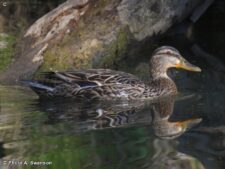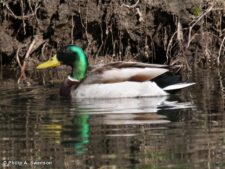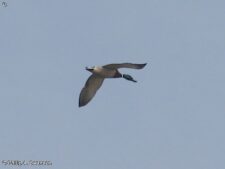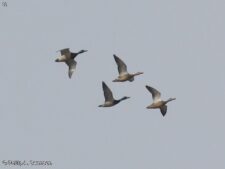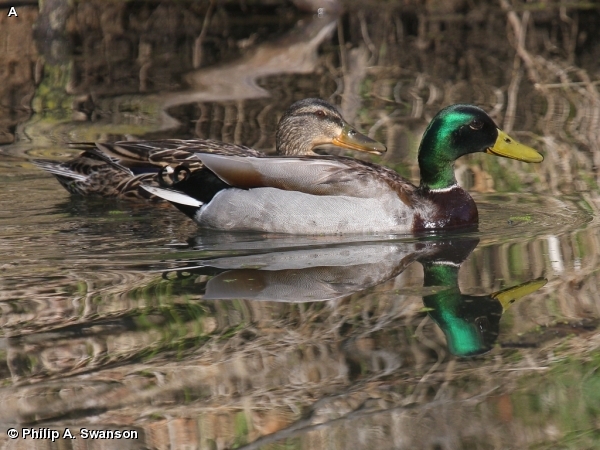
23 inches long with a wingspan of 35 inches. The Mallard is a large dabbling duck. The blue speculum is outlined by a thin white stripe front and back. The wings have silver linings. The breeding male has a yellow bill with a black spot on the tip. He also has a gray back, and green head with a white ring around the neck. The breast is chestnut and the undertail coverts are black and contrast with a white tail. While swimming some of the tail feathers show a distinct curve. Breeding plumage is worn from fall to early summer. The female has an orange bill with a black central patch. The body is mottled brown and tan. The face is pale brown and there is a dark cap and a line through the eye.
The Mallard is a breeder in the area and has been known to occasionally breed in the Forest. It is a common migrant that can be seen from mid February through the end of December.
The Mallard is the most familiar and abundant of the dabbling ducks. It will winter as far north as it can find open water. Although the Mallard is the most heavily hunted duck species in North America, its populations remain more or less steady, and the species is not considered in danger. The call is the familiar “quack, quack” given by the female.
Disclaimer: The content of NatureSearch is provided by dedicated volunteer Naturalists of Fontenelle Forest who strive to provide the most accurate information available. Contributors of the images retain their copyrights. The point of contact for this page is: Phil Swanson.


